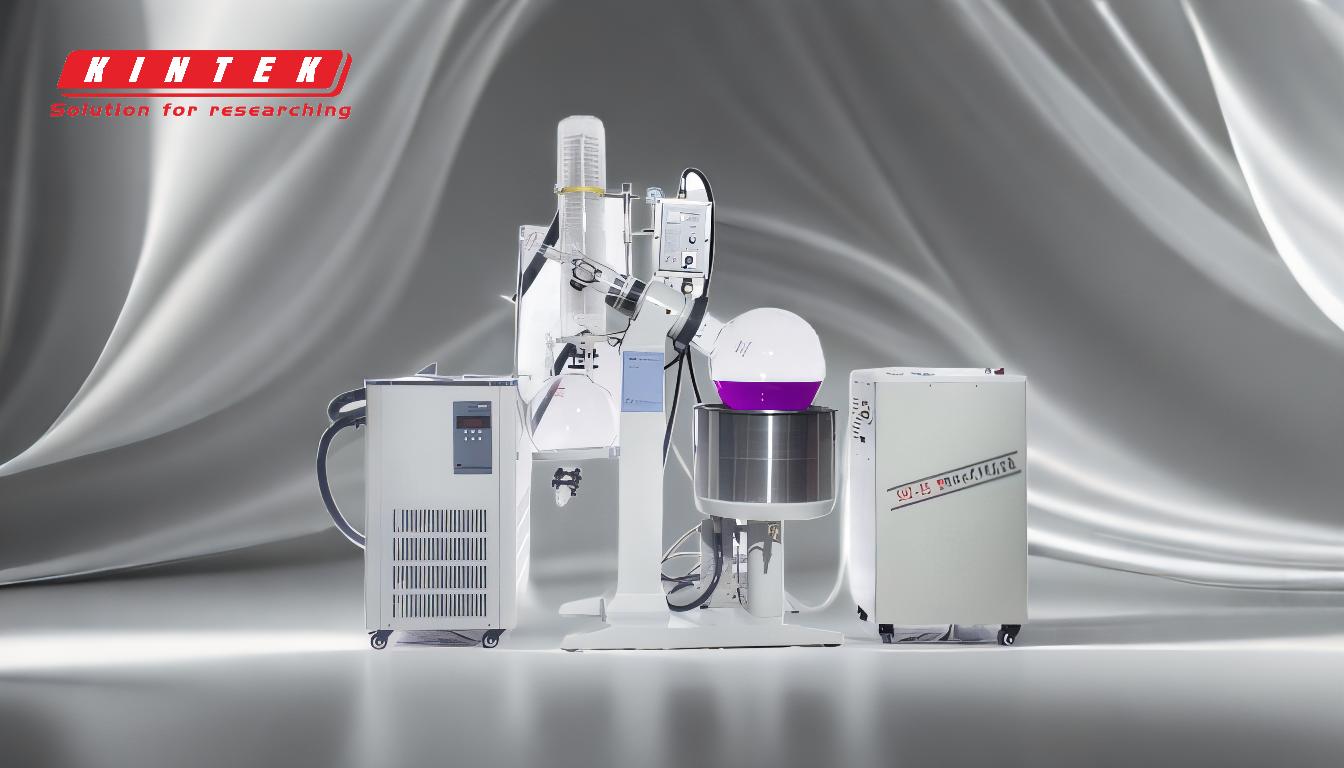The vacuum in a rotary evaporator plays a crucial role in the separation and purification of compounds by lowering the boiling point of solvents. This allows solvents to evaporate at much lower temperatures than they would under normal atmospheric pressure, which is essential for heat-sensitive compounds. The vacuum system reduces pressure within the evaporator, enabling gentle and efficient evaporation of solvents without the need for excessive heat. This process not only preserves the integrity of the compounds being processed but also enhances safety by preventing the release of volatile vapors into the environment. The vacuum is controlled via a stopcock and can range from simple water aspirators to complex mechanical vacuum pumps, depending on the application.
Key Points Explained:

-
Lowering the Boiling Point of Solvents:
- The primary function of the vacuum in a rotary evaporator is to lower the boiling point of the solvent. By reducing the pressure inside the system, the solvent can evaporate at a significantly lower temperature than it would under normal atmospheric conditions. This is particularly important for heat-sensitive compounds that could degrade or lose their properties at higher temperatures.
-
Facilitating Solvent Separation:
- The vacuum system aids in the separation of the solvent from the compound of interest. By lowering the boiling point, the solvent evaporates more easily, leaving behind the desired compound in a more concentrated and purified form. This is a key step in many chemical and pharmaceutical processes where solvent removal is essential.
-
Gentle Evaporation Process:
- The use of a vacuum allows for a gentle evaporation process. Instead of applying high heat, which could damage sensitive compounds, the vacuum enables evaporation at lower temperatures. This gentle process helps preserve the integrity, flavor, and chemical properties of the sample being processed.
-
Enhanced Safety:
- The vacuum system helps contain volatile vapors within the evaporator, preventing them from escaping into the air. This reduces the risk of exposure to hazardous chemicals and minimizes the potential for environmental contamination. The controlled environment created by the vacuum system enhances overall laboratory safety.
-
Types of Vacuum Systems:
- The vacuum system in a rotary evaporator can vary in complexity. For non-toxic solvents, a simple water aspirator with a cold trap may suffice. For more demanding applications, a regulated mechanical vacuum pump with a refrigerated trap is used. The choice of vacuum system depends on the specific requirements of the solvent and the compound being processed.
-
Control and Ventilation:
- The vacuum is controlled using a stopcock located at the highest point of the condenser. This allows for precise regulation of the pressure within the system. After the solvent has been removed, the vacuum system is used to ventilate the configuration, ensuring that the system is safely depressurized before the sample is retrieved.
-
Energy Efficiency:
- By reducing the need for excessive heat, the vacuum system contributes to energy efficiency in the laboratory. Lower operating temperatures mean less energy is required to achieve the desired evaporation, making the process more sustainable and cost-effective.
In summary, the vacuum in a rotary evaporator is essential for lowering the boiling point of solvents, facilitating their gentle and efficient removal, and ensuring the safety and integrity of the compounds being processed. The system's design and operation are tailored to meet the specific needs of various applications, making it a versatile and indispensable tool in many scientific and industrial processes.
Summary Table:
| Key Function | Description |
|---|---|
| Lowering Boiling Points | Reduces pressure to evaporate solvents at lower temperatures, ideal for heat-sensitive compounds. |
| Facilitating Solvent Separation | Aids in separating solvents from compounds, leaving behind purified materials. |
| Gentle Evaporation | Enables evaporation at low temperatures, preserving compound integrity. |
| Enhanced Safety | Contains volatile vapors, reducing exposure risks and environmental contamination. |
| Types of Vacuum Systems | Ranges from simple water aspirators to complex mechanical pumps, depending on needs. |
| Control and Ventilation | Precise pressure regulation via a stopcock and safe depressurization after use. |
| Energy Efficiency | Reduces energy consumption by operating at lower temperatures. |
Discover how a rotary evaporator can optimize your lab processes—contact us today for expert advice!















